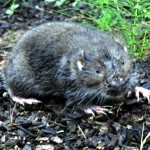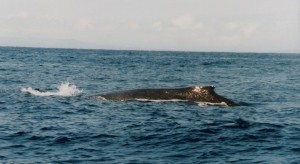Phylum: Chordata Class: Mammalia
10 Orders of mammals represent wildlife in the Northwest:
- Carnivora – wolves, bears, cats, weasels, skunks (see note below)
- Lagomorpha – rabbits, hares, pikas
- Cetacea – whales, dolphins, porpises
- Artiodactyla – deer, goats, sheep (even toed ungulates)
- Perrisodactyla – Horses (odd toed ungulates)
- Insectivora – shrews and moles
- Chiroptera – bats
- Marsupiala – opossums
- Pinnipedia – seals and sea lions
- Rodentia – the rodents
Note: According to Dr. Jerry W. Dragoo, biologist and renowned expert on the subject of “Mephitology” at the University of New Mexico, the skunks, previously classified with weasels, are now considered in a separate family. Dr. Dragoo graciously provided the photos of the Striped Skunk.
And a special thanks to Erin and her observant students in Gig Harbor for help in correcting this page.
”More Than 6,495 Species of Mammals Have Been Identified by Scientists.” This quote was given to me from the World Animal Foundation. See the link below. From a reptilian origin in the Mesozoic period mammals have expanded into every possible niche that the combined imagination of earth and nature have conceived. Whales reside in the deep sea; beavers and water shrews inhabit freshwater; polar bears prowl the arctic snow and leopard seals hunt Antarctic waters. From north pole to south pole and from ground to air this warm blooded, mammary gland possessing body structure coupled with high intelligence and dedicated parental skill has proven extraordinarily adaptable.
Their adaptability is displayed in a remarkable range of body types. No other single class of chordate animals exhibit the extreme size and morphologic variety as the mammals. The difference between a hummingbird and an ostrich is large, but the divergence between a blue whale and a bumble bee bat from Thailand represents variety on entirely new order of magnitude.
There are, of course, commonalities. Mammary glands provide the very first food of the young mammal. Hair is present, at least partially or at some point, in a mammal’s life. They are back boned, warm blooded, and for the most part have a relatively large brain compared to body size. Nearly all are devoted, loving parents – a trait that endears them to us like no other animal.
Depending on the source the Northwest is home to an estimated 158 mammal species. Our terrestrial wildlife family varies from half ton heavy weights like moose and grizzlies to Preble’s shrew – an animal so small it would take eight of them to weigh an ounce. Our most famous wildlife residents are probably the 30 or so aquatic mammals that populate the coastal waters. The sight and sounds of an Orca pod with six foot fins breaking the surface of Puget Sound is a memorable experience and porpoises racing the front of a bow wave are a guaranteed thrill. Harbor seals, sometimes seem as common as sea gulls, but they never fail to fascinate. Gray whales, Minke whales, and humpbacks provide an amazing show as they migrate up and down the coast.
The land holds wildlife wonders, too. The Northwest is the last place in the lower 48 where grizzlies regularly hunt elk, cougars stalk deer, and ravens hover over wolves waiting for scraps. A mountain goat on an alpine peak is a shaggy white mystery. Pronghorn antelopes racing across a treeless expanse is a sight you will not forget. Wolverines are still a possible wilderness experience, and we boast no less than 17 species of bats.
And what about our deep forest phantom, Bigfoot? Perhaps you’ll one who puts this mystery to rest. In the meanwhile, content yourself with the astounding variety of real Northwest mammalian wildlife.
Reference: World Animal Foundation – a great site for all animals: https://worldanimalfoundation.org/advocate/how-many-animals-are-in-the-world
<
>


